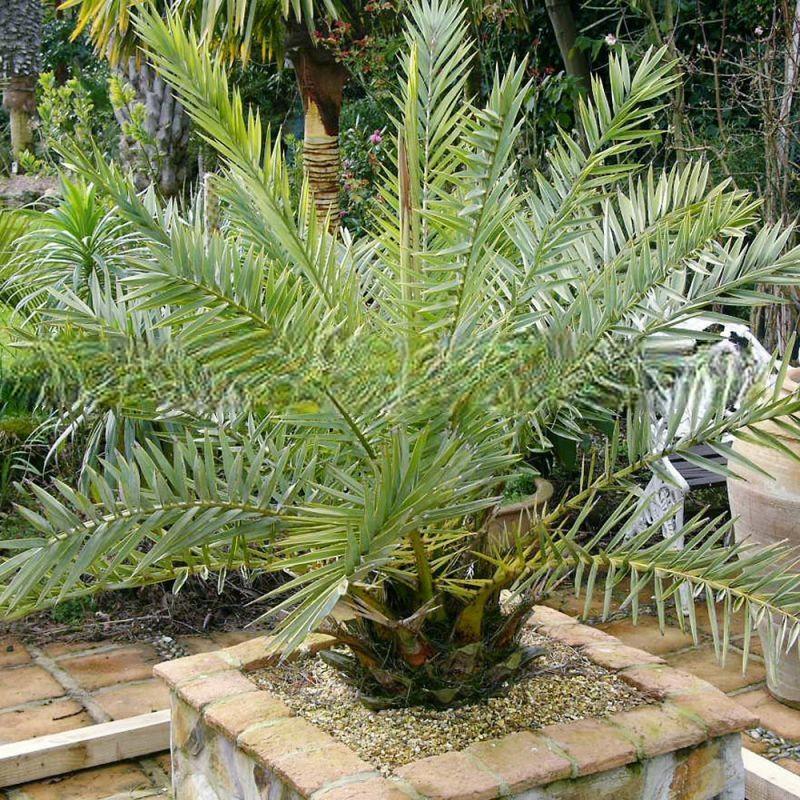Phoenix theophrasti, commonly known as the Cretan Date Palm or Theophrastus' Date Palm, is a rare and ancient species of palm native to the eastern Mediterranean, specifically the island of Crete and a few surrounding areas in Greece and Turkey. This palm is one of the few species of palms that are native to Europe.
The Cretan Date Palm typically grows to a height of 10–15 meters (33–49 feet), with a single, slender trunk covered in old leaf bases. The crown is composed of pinnate fronds that are gray-green in color, with each frond reaching up to 3 meters (10 feet) in length. The fronds have stiff, sharp leaflets, giving the tree a somewhat rugged appearance. In late summer, the palm produces small, yellowish flowers that develop into clusters of small, oval, orange-brown dates. These dates are generally not considered edible.
☀️ Mediterranean Treasure: This palm is adapted to the dry, rocky environments of its native habitat and is highly drought-tolerant. Its striking appearance and resilience make it a unique and valuable addition to Mediterranean gardens or similar dry, warm climates. One of Europe's rarest native palms!











